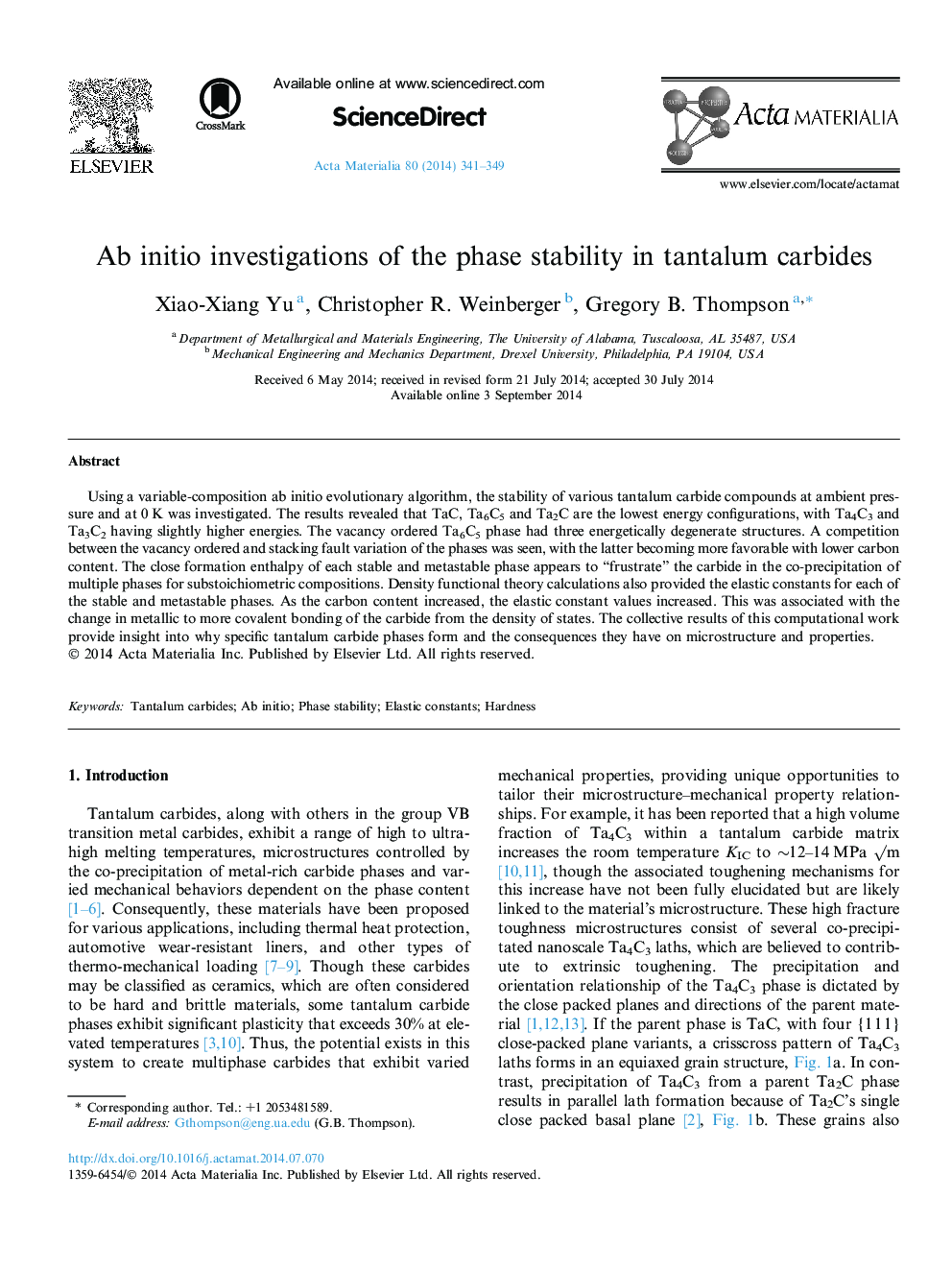| Article ID | Journal | Published Year | Pages | File Type |
|---|---|---|---|---|
| 7881206 | Acta Materialia | 2014 | 9 Pages |
Abstract
Using a variable-composition ab initio evolutionary algorithm, the stability of various tantalum carbide compounds at ambient pressure and at 0Â K was investigated. The results revealed that TaC, Ta6C5 and Ta2C are the lowest energy configurations, with Ta4C3 and Ta3C2 having slightly higher energies. The vacancy ordered Ta6C5 phase had three energetically degenerate structures. A competition between the vacancy ordered and stacking fault variation of the phases was seen, with the latter becoming more favorable with lower carbon content. The close formation enthalpy of each stable and metastable phase appears to “frustrate” the carbide in the co-precipitation of multiple phases for substoichiometric compositions. Density functional theory calculations also provided the elastic constants for each of the stable and metastable phases. As the carbon content increased, the elastic constant values increased. This was associated with the change in metallic to more covalent bonding of the carbide from the density of states. The collective results of this computational work provide insight into why specific tantalum carbide phases form and the consequences they have on microstructure and properties.
Related Topics
Physical Sciences and Engineering
Materials Science
Ceramics and Composites
Authors
Xiao-Xiang Yu, Christopher R. Weinberger, Gregory B. Thompson,
